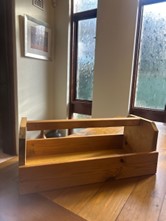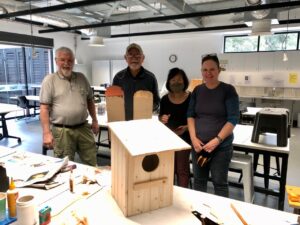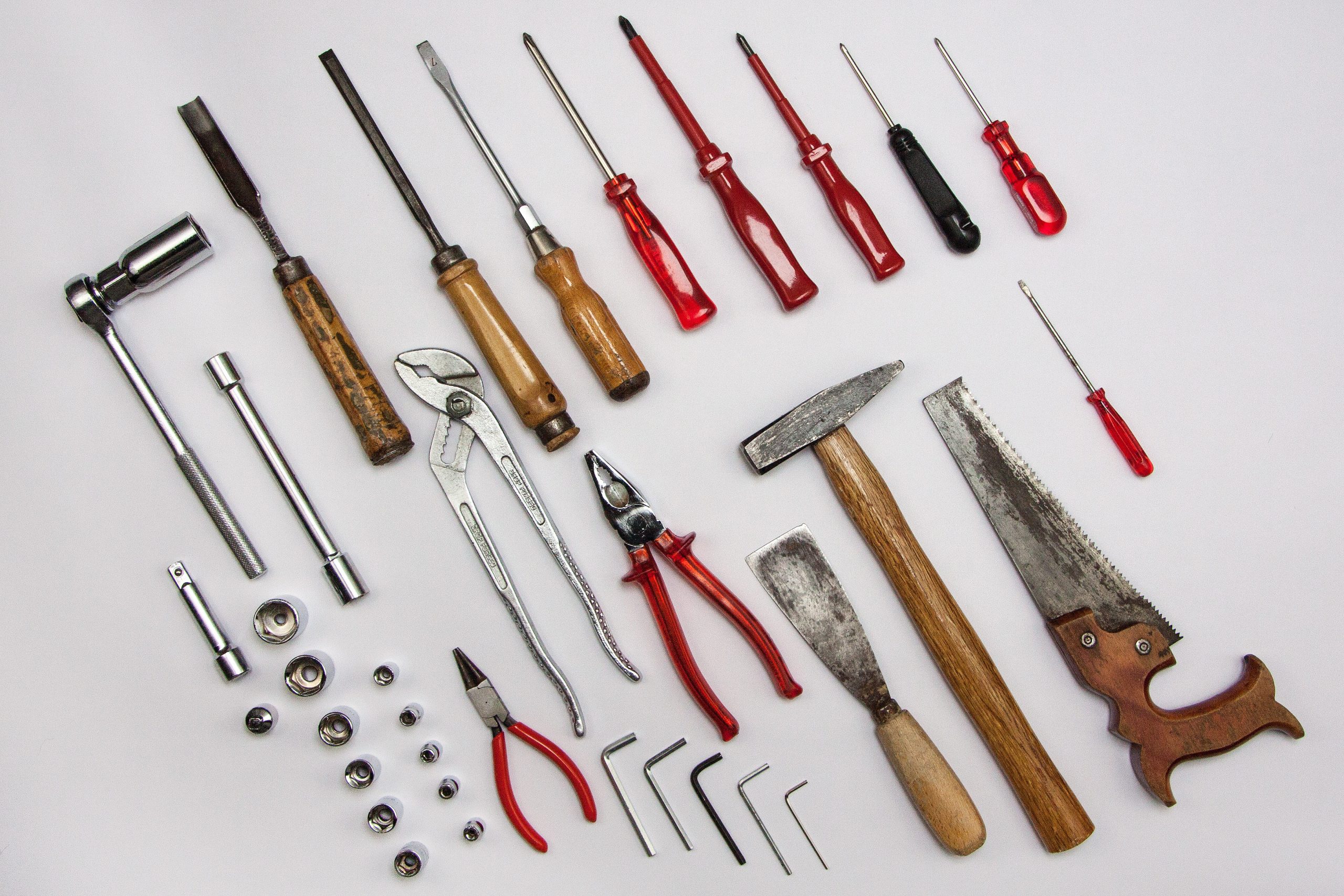Description
Requirements: NOTE; any corded power tools will need a current safety tag. Personal protection is very important. Participants are to wear robust work clothes such as trousers and shirts and substantial enclosed footwear. See link to course outline below for tools required.
Work Health and Safety: Before participating in your first session you will need to read and acknowledge the course specific Work Health and Safety document. This can be read via the link below and signed in class: WHS Induction – Handy Persons
A draft course outline, tools list, lesson notes etc. appear at: https://habilispractice.weebly.com/
Activities undertaken during the semester include:
- Construct a simulated timber framed plasterboard wall/ceiling section.
- Fit hooks, brackets etc, to the above work piece with hollow-wall fixings and also practice masonry drilling and fixing.
- Repair damaged plasterboard.
- Complete simple sheet metalworking tasks like cutting, drilling, screwing and riveting.
- Discuss applications of various adhesives.
- Discuss “wet” building skills like concrete, mortar and tiling.
- Complete a simple wall tiling exercise on the work piece.
- Discuss basic reticulation principles and practice assembling “poly” pipe items.
- Undertake a small woodworking project to consolidate the hand skills.
- Discuss and apply finishes such as paints, varnish or oils.
Some projects completed:
Class Project:





bpasottiҘ –
Mr Fixit Delivers on the Handyperson Course
John Paskulich is our Tutor and is certainly one of the most experienced “Mr Fixits” and enthusiastic, likeable persons – just like all our other Tutors at Kalamunda Community Learning Centre!
What is more important is that John understands that this is all new for most participants and they will make mistakes – some very funny but that is all part of being there and having a go at the vast range of materials, tools and instructions he provides.
Attending his Handyperson Course is made easy with a step-by-step process each week with demonstrations, coaching and learning via a buddy system to make quick progress and can spark the opportunity to complete personal projects that utilise the main skills you need to develop.
John has a Handyman skillset that has been honed over the past 50 years. His experience has been via long stints at Telecom and as a TAFE lecturer plus has supervised a couple of home builds as an owner builder. His positive attitude is 24/7 and you quickly develop a healthy respect for his experience and ready to listen and help attitude. You would not doubt that he could fix almost anything except maybe a broken heart – we can leave that to James Taylor and his song “Handyman”.
The Handyperson Course runs over two terms and is supported with incredible and easily accessible resources located on his website. At first glance, you could be forgiven for thinking I can’t learn all of this but somehow you do learn a lot and with more practice, you will be amazed!
The first course has been delivered and already John has been busy doing the fine-tuning to recognise the learning needs of the next group both in terms of differing physical ability and strength required for using some tools and what also can be achieved comfortably in a Friday afternoon session. There is not enough space to list the topics but for me, I really benefitted from the sessions on How to use the Electric Drill and know all the “bells and whistles” they have; How to properly use the features of a Circular Saw; Advantages/Disadvantages of a Pop Rivet gun; Tile cutting, grouting & Adhesives; Different types of Sanders; Using the correct hand saw; Knowledge of Glues and much more about screws and nails that I ever knew!
Be warned there is no time for a designated afternoon tea break as the time soon vanishes and it is time for the team to clean the room and pack up. Scrap timber is stored for future practice. Nothing is wasted! Even the sawdust is often eagerly collected as a resource to make wood filler! John provides the materials and charges fairly where any cost must be incurred – he often can source free timber, tiles, retic parts and more to provide the range of materials the various sessions require.
Each participant soon acquires more confidence and familiarity with the vast array of materials and tools John can provide. The personal development is quite amazing as participants begin to discuss their home projects and make a start knowing John can coach them through the obstacles and get to the finish line.
Some comments about the first course and why people attended
· Each person, depending on their circumstances, had sensed they needed to be a bit more independent and wanted to take this opportunity to learn basic tools, choice of materials for any given task, and the method or process to follow for relatively simple tasks.
· Participants were predominantly female with only one male – come on guys you all can’t be that good that you don’t need to attend these sessions!
· No classroom injuries occurred so it is safe
· Equipment and materials were provided. You were asked to bring in some of your tools. You could decide if you needed to buy some specific items based on what you were learning and the applications they could be put to after the completion of the Handyperson Course
· Good team spirit quickly developed to share using some of the equipment and made the personal effort to help with the setup, cleanup and packing away for each session
· Participants began to apply this new knowledge and make a start on some specific home projects
Submitted by semester 1 2024 participant